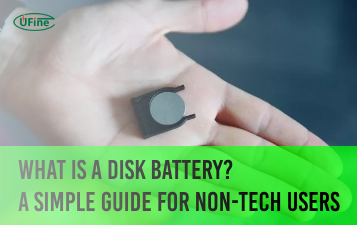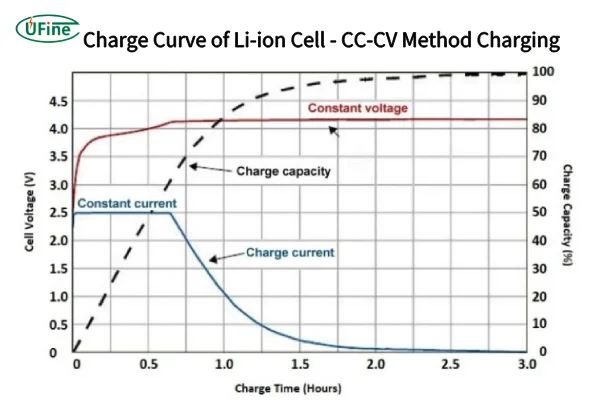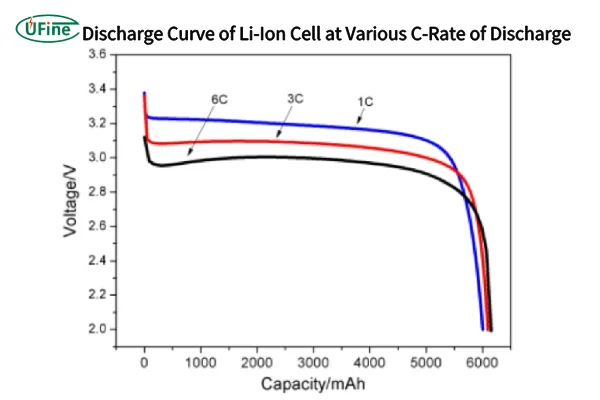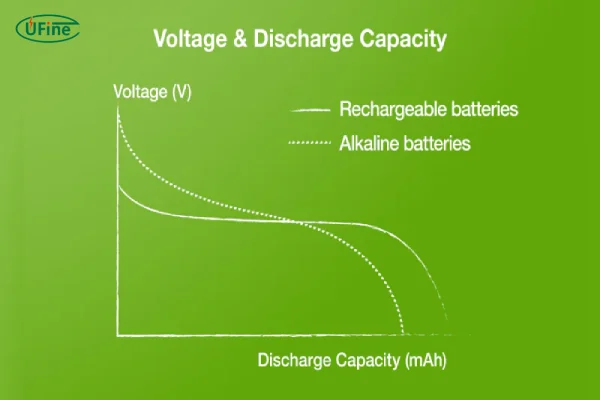In the world of batteries, one of the most important aspects of their operation is understanding charging voltage and discharging voltage. These terms are essential for anyone looking to maximize the lifespan and performance of their batteries. Whether you’re using lithium-ion batteries, AA batteries, or even car batteries, the concept of voltage plays a critical role in how these power sources work.
In this article, we’ll explore what charging and discharging voltage are, how they affect the performance of batteries, and why they fluctuate during use. By the end of this guide, you’ll have a clear understanding of these terms, as well as how to manage your battery’s voltage to optimize its efficiency.
Part 1. Understanding charging voltage and discharging voltage
Charging voltage refers to the voltage applied to a battery to recharge it. It is typically higher than the battery’s nominal voltage, as the battery must overcome internal resistance and the potential to store more energy.
Discharging voltage, on the other hand, is the voltage that a battery provides while it is supplying power to a device. As a battery discharges, its voltage gradually decreases until it reaches a level where it can no longer supply sufficient power.
These voltages are crucial because they determine how effectively a battery charges and discharges, as well as its overall health. Too high or too low of a charging voltage can shorten a battery’s lifespan or even cause it to fail prematurely.
How to Read Lithium Battery Discharge Curve and Charging Curve?
Part 2. Charging and discharging voltage of common batteries
Different types of batteries have specific charging and discharging voltage ranges. Here’s an overview of the charging and discharging voltages for some of the most commonly used batteries:
-
Lead-Acid Batteries
- Charging Voltage: Typically around 14.4 to 14.7V
- Discharging Voltage: Usually 11.8V to 12.0V (for a 12V battery)
-
Lithium-Ion (Li-ion) Batteries
- Charging Voltage: Typically 4.2V per cell (for a 3.7V nominal cell)
- Discharging Voltage: Typically 3.0V to 3.2V per cell (for a 3.7V nominal cell)
-
Nickel-Metal Hydride (NiMH) Batteries
- Charging Voltage: Typically 1.45V per cell
- Discharging Voltage: Typically 1.0V per cell
-
Nickel-Cadmium (NiCd) Batteries
- Charging Voltage: Typically 1.45V per cell
- Discharging Voltage: Typically 1.0V per cell
-
Alkaline Batteries (Non-Rechargeable)
- Charging Voltage: Not recommended to charge, but usually around 1.5V when fresh
- Discharging Voltage: Typically 0.9V when fully discharged
Part 3. How to know charging voltage and discharging voltage?
To know the charging voltage and discharging voltage of a battery, you can either refer to the battery’s datasheet or measure it using a multimeter.
-
Datasheets: Most reputable battery manufacturers provide detailed datasheets that outline the recommended charging and discharging voltages for each type of battery. This is often the most reliable source of information.
-
Multimeter: You can measure the discharging voltage by connecting the multimeter probes to the positive and negative terminals of the battery while it’s under load (i.e., supplying power to a device). For charging voltage, you can measure the voltage across the battery terminals while it’s being charged.
It’s important to follow manufacturer guidelines to avoid damaging the battery or shortening its lifespan.
Part 4. Why does the battery voltage change when charging and discharging lithium batteries?
When lithium-ion batteries are charged and discharged, their voltage fluctuates due to several factors:
-
Internal Resistance: As the battery discharges, internal resistance within the battery causes the voltage to drop. Conversely, during charging, the battery’s internal resistance increases, which may cause a temporary rise in voltage.
-
Chemical Reactions: The process of charging and discharging involves the movement of lithium ions between the anode and cathode. As these ions move, the voltage fluctuates due to the chemical reactions occurring inside the battery.
-
State of Charge: The voltage of a lithium-ion battery increases as it charges and decreases as it discharges. The voltage reaches a peak (usually 4.2V per cell) when fully charged and drops to around 3.0V per cell when it’s almost empty.
-
Temperature Effects: Temperature can also affect the voltage. In colder temperatures, the battery may exhibit lower voltage during discharge, while excessive heat during charging can cause the voltage to rise beyond normal levels.
Part 5. What effect does the voltage change of lithium-Ion batteries have on battery performance?
The fluctuation of voltage during the charging and discharging cycle can have a significant impact on the performance and longevity of lithium-ion batteries:
-
Capacity Loss: Repeatedly discharging a lithium-ion battery to a very low voltage (e.g., below 3.0V per cell) can cause the battery’s capacity to decrease over time. Likewise, charging above 4.2V per cell can lead to thermal runaway or damage to the battery’s internal structure.
-
Cycle Life: Lithium-ion batteries have a finite number of charge-discharge cycles, and extreme voltage changes can reduce the number of cycles a battery can endure. For optimal lifespan, it’s best to keep the voltage within a safe range, generally between 3.2V and 4.1V per cell.
-
Efficiency: If a battery is charged too quickly (with too high of a charging voltage), it can result in heat generation, leading to inefficiencies in energy storage and potential damage.
Part 6. Limiting charging voltage and limiting discharging voltage
To maintain the health of a battery, it’s essential to adhere to the limiting charging voltage and limiting discharging voltage:
-
Limiting Charging Voltage: For lithium-ion batteries, the maximum charging voltage is usually 4.2V per cell. Charging above this voltage can cause internal damage, increase the risk of overheating, and reduce battery life.
-
Limiting Discharging Voltage: For lithium-ion batteries, discharging below 3.0V per cell is typically considered unsafe. Doing so can damage the battery’s internal structure and significantly reduce its capacity. For other types of batteries, the limiting voltage will vary (e.g., 1.0V for NiMH or NiCd).
Adhering to these limits ensures that the battery operates efficiently and has a longer life span.
Part 7. What is floating charge voltage?
Floating charge voltage is the voltage level at which a battery is kept during the maintenance phase of charging, typically after it has reached its full charge. This voltage is slightly lower than the charging voltage to prevent overcharging. It helps to maintain the battery at full charge without stressing the internal components.
For example, after a lead-acid battery reaches its full charge (around 14.4V), the floating charge voltage might be reduced to 13.5V to keep it topped off without risking damage. This is especially useful for batteries that are connected to a constant power supply, such as backup systems or solar setups.
Part 8. Difference between nominal voltage and charging voltage
The nominal voltage is the average voltage of a battery during its discharge cycle, which represents its typical operating voltage. For example, the nominal voltage of a lithium-ion battery is usually 3.7V, but this voltage fluctuates as the battery is charged or discharged.
Charging voltage, on the other hand, is the higher voltage applied to a battery during the charging process to fully recharge it. For lithium-ion batteries, this is typically 4.2V per cell, which is higher than the nominal voltage.
Part 9. Other key parameters of charging and bischarging
When working with batteries, it’s essential to consider other key parameters to ensure safe and efficient operation:
-
Charge Current: The rate at which the battery is charged, typically expressed in amperes (A). Charging too quickly can damage the battery, while slow charging is generally safer.
-
Discharge Current: The rate at which the battery discharges, typically measured in amperes (A). High discharge currents can cause voltage sag and shorten battery life.
-
State of Charge (SOC): A measure of the battery’s current charge level, typically expressed as a percentage (0% to 100%).
-
State of Health (SOH): A measure of the battery’s overall health, which can be influenced by factors like cycle count and temperature.
-
Temperature: Both charging and discharging performance are affected by temperature. High temperatures can cause overcharging, while low temperatures can reduce the discharge capacity.
-
Voltage Cutoff: The voltage level at which the battery is considered empty, typically around 3.0V for lithium-ion cells.
-
Charge/Discharge Efficiency: The ratio of energy stored during charging to energy released during discharging. High efficiency means less energy is lost in the form of heat.
Part 10. Conclusion
Understanding charging voltage and discharging voltage is essential for getting the most out of your batteries, especially lithium-ion cells. These voltages directly impact the battery’s performance, efficiency, and lifespan. By monitoring voltage changes, adhering to safe limits, and considering other key parameters, you can ensure your batteries operate optimally and last longer. Whether you’re powering a smartphone, an electric vehicle, or a backup system, voltage management is key to battery health.
Related Tags:
More Articles

What Is a Disk Battery? A Simple Guide for Non-Tech Users
A disk battery is a small, round cell used in watches, remotes, and other electronic devices. It delivers steady power for compact, low-drain devices.
What Battery Powers a Space Heater?
Discover the type of battery that powers space heaters and learn how to choose the right one for efficient heating in your home or office.
What Is an LR14 Battery? Learn About This C-Size Cell
The LR14 battery, also known as a C battery, delivers steady power. Learn its specs, uses, lifespan, and how it compares to other battery types.
Watch Battery Dimensions Chart: Sizes, Voltages, and Equivalents Explained
Understanding watch battery dimensions helps you choose the right size, voltage, and equivalent model to keep your watch running safely and smoothly.
How Long Can You Rely on Battery-Powered Generators?
Discover battery generator runtime & lifespan factors. Learn how to maximize performance and choose the right power solution.






